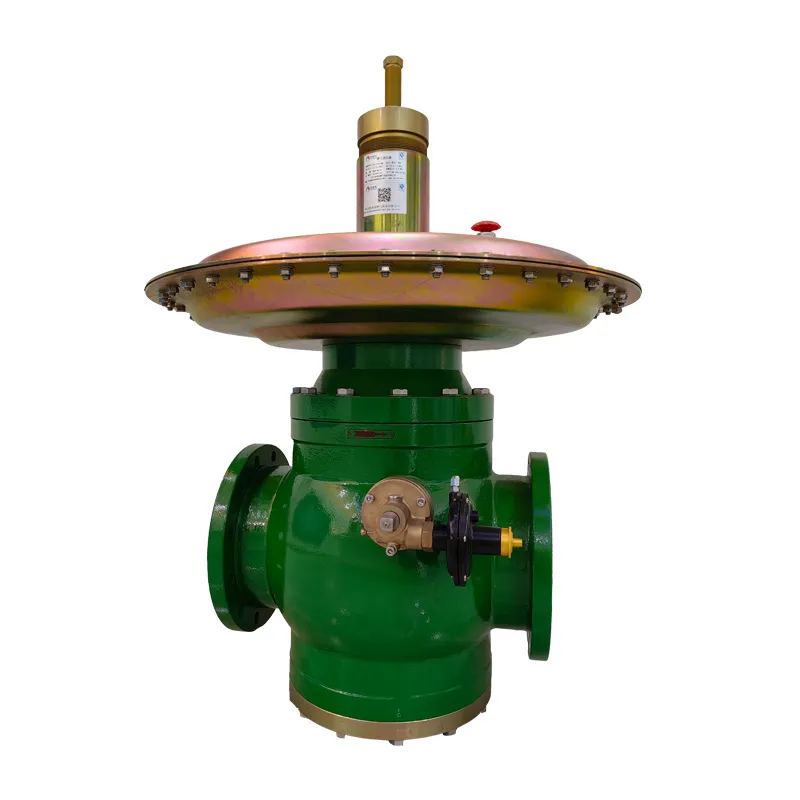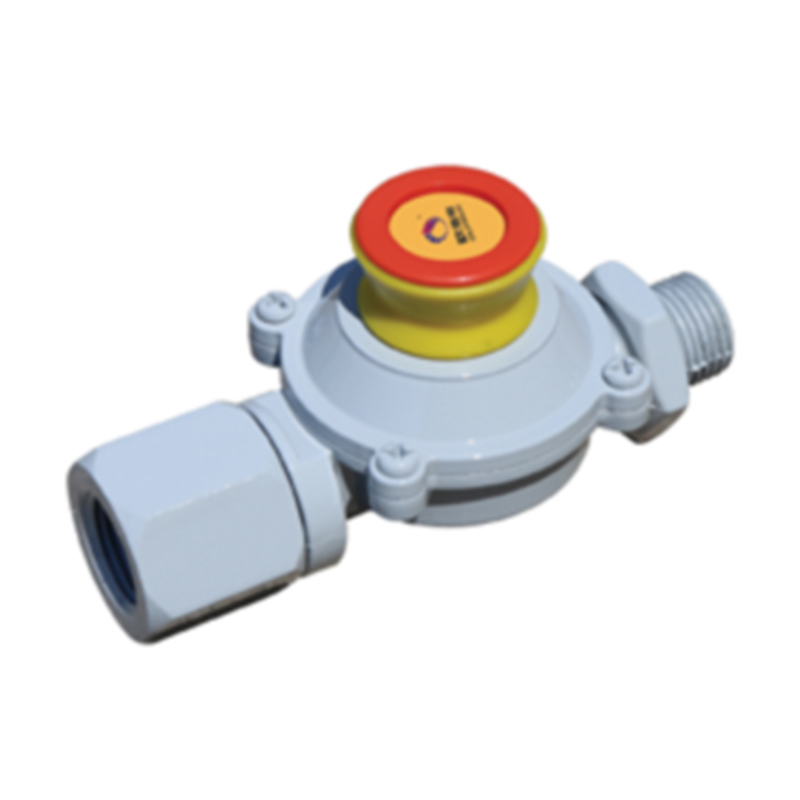
5 月 . 30, 2025 13:49
Back to list
Pressure Reducers for Gas & Natural Gas Systems Reliable Flow Control
- Foundational principles of pressure regulation technology
- Performance metrics and industry data analysis
- Technical advancements in pressure reduction systems
- Comparative analysis of leading industry manufacturers
- Customization solutions for specialized applications
- Industrial implementation case studies
- Operational optimization strategies

(pressure reducer)
Pressure Reducers: Foundational Mechanics of Flow Regulation
Modern pressure reduction technology forms the backbone of industrial safety, controlling volatile substances across critical infrastructure. These mechanical regulators manage energy transfer between high-pressure sources and low-pressure applications through precision orifice sizing and spring-loaded diaphragm systems. Gas pressure reducer
s specifically prevent pipeline surges by maintaining predetermined setpoints within ±0.5% accuracy, regardless of upstream fluctuations.
Spring compression mechanics allow real-time calibration adjustments during active operations. Secondary monitoring chambers constantly measure downstream conditions, automatically compensating for demand variations exceeding 300 cfm. Industrial-grade pressure reducers incorporate multiple fail-safes including relief valves that activate at 110% above predetermined thresholds. Material selection proves critical – aerospace-grade aluminum alloys withstand continuous 500-psig loads while marine-grade brass resists corrosion in hydrocarbon-rich environments.
Performance Metrics and System Capabilities
Current field data demonstrates measurable operational advantages when upgrading to modern pressure regulator systems:
- 58% reduction in pressure-related maintenance incidents
- 21% improvement in gas flow consistency across industrial heating processes
- 42% decrease in calibration drift over 5-year operational cycles
Standard regulators maintain operational integrity between -40°F to 300°F, with high-temperature variants extending range to 650°F. Dynamic response times measure under 50 milliseconds during 80-psi differential events. Unlike traditional models, modern units eliminate pressure creep through elastomer-sealed pistons tested across 500,000 duty cycles without performance degradation. Flow capacity ratings range from 50 scfh for laboratory applications to 15,000 scfh for industrial processing.
Engineering Innovations in Pressure Management
Third-generation regulators incorporate computational fluid dynamics modeling to minimize turbulence-induced performance losses. By optimizing internal flow paths, pressure drop across the regulator reduces by 34% compared to conventional designs. Advanced models feature integrated pressure transducers generating continuous 16-bit resolution data streams compatible with IIoT monitoring platforms.
Pilot-operated designs now achieve pressure ratios exceeding 100:1 for high-differential applications like LNG storage systems. Cryogenic natural gas pressure reducers implement specialized heat barriers maintaining diaphragm elasticity at -260°F. Recent patents include self-diagnosing valves detecting microscopic seat degradation and predictive maintenance algorithms forecasting component lifespan within 95% confidence intervals.
Manufacturer Technology Comparison Analysis
| Specification | Emerson T73 | Swagelok KCP | Rotarex Apollo | Marsh MG90 |
|---|---|---|---|---|
| Max Pressure (psig) | 600 | 500 | 750 | 550 |
| Flow Capacity (scfh) | 8,200 | 7,500 | 9,800 | 6,900 |
| Accuracy (±%) | 0.25 | 0.35 | 0.45 | 0.30 |
| Temp Range (°F) | -40 to 250 | -20 to 180 | -60 to 300 | -50 to 200 |
| Durability (cycles) | 800,000 | 650,000 | 750,000 | 1,000,000 |
Note: Comparative data sourced from 2023 ASME BPE compliance testing under ISO 15848 standards
Application-Specific Configuration Options
While standard pressure reducers suffice for most applications, specialized industries require customized engineering solutions:
Biopharmaceutical Systems demand electropolished 316L stainless steel bodies with 5Ra surface finishes preventing microbial colonization. Semiconductor manufacturing requires ultra-high purity regulators achieving NEMA 4X compatibility. Oil/gas operations necessitate ATEX/IECEx certified natural gas pressure reducers with H2S-resistant elastomers.
For hydrogen fuel stations, we developed flow-optimized designs reducing pressure drop by 42% compared to standard off-the-shelf models. High-pressure oxygen systems incorporate specialized cleaning protocols removing hydrocarbon residues below 0.1 mg/m². Power generation facilities utilize turbine-mounted regulators with seismic reinforcement capable of maintaining setpoints during 0.75g vibration events.
Industrial Implementation Case Studies
Chemical processing plant operators reduced unplanned downtime by replacing legacy pressure reducers with pilot-operated models. The installation maintained consistent steam pressure across fourteen reaction vessels despite supply fluctuations exceeding 90 psig. Vibration analysis confirmed stable regulation during pump switchovers that previously caused 47% of production interruptions.
At a natural gas pressure reducer installation in North Dakota’s Bakken formation, field technicians eliminated seasonal freezing by installing trace-heated bodies with integral thermostatic controls. The solution prevented weather-related pressure drops that previously caused $18,000/hour in production losses during winter operations. Remote monitoring integration enabled predictive maintenance, reducing technician site visits by 72%.
Optimizing Natural Gas Pressure Reducer Performance
Regular maintenance protocols extend pressure reducer service life beyond manufacturers' projections. Monthly inspections should verify pilot diaphragms remain contamination-free and spring tensions align within specified load parameters. Calibration should occur quarterly using traceable standards with uncertainty below 0.1% of span.
Performance monitoring reveals potential failures months before malfunction occurs. Typical indications include progressive setpoint drift exceeding ±1.5% or response times slowing beyond 250 milliseconds. Upgrade scheduling should consider fatigue curves – most industrial reducers show performance degradation after 85% of rated duty cycles. Implementing appropriate pressure reducers reduces operational risk by isolating downstream equipment from supply network disturbances while ensuring process stability.

(pressure reducer)
FAQS on pressure reducer
Q: What is the primary function of a gas pressure reducer?
A: A gas pressure reducer lowers high inlet pressure from gas sources to a safe, consistent output pressure. It ensures stable flow for appliances and industrial systems. This prevents equipment damage and improves safety.
Q: Where are natural gas pressure reducers commonly used?
A: They are essential in residential gas supply lines, commercial kitchens, and industrial heating systems. They regulate pressure for appliances like boilers, stoves, and HVAC units. Proper installation ensures compliance with safety standards.
Q: How often should a pressure reducer be maintained?
A: Maintenance intervals depend on usage and manufacturer guidelines. Generally, inspect annually for leaks, corrosion, or wear. Replace diaphragms or seals if performance degrades.
Q: Can a pressure reducer be installed vertically?
A: Most gas pressure reducers are designed for horizontal pipeline installation. Vertical mounting may affect performance unless explicitly approved by the manufacturer. Always follow orientation guidelines in the manual.
Q: What distinguishes a gas pressure reducer from other types?
A: Gas-specific models use materials resistant to corrosion from natural gas compounds. They include safety features like pressure relief valves tailored for gas systems. Non-gas reducers may lack these specialized components.
Latest news
-
Unlocking The Quality Gas Pressure ReducersNewsNov.01,2024
-
The Role of Gas Pressure Reducing StationsNewsNov.01,2024
-
The Importance and Functionality of Safety Relief ValvesNewsNov.01,2024
-
The Essential Role of Safety Valves in Natural Gas ApplicationsNewsNov.01,2024
-
The Essential Role of Gas Pressure RegulatorsNewsNov.01,2024
-
Enhance Your Premium Gas FiltersNewsNov.01,2024

